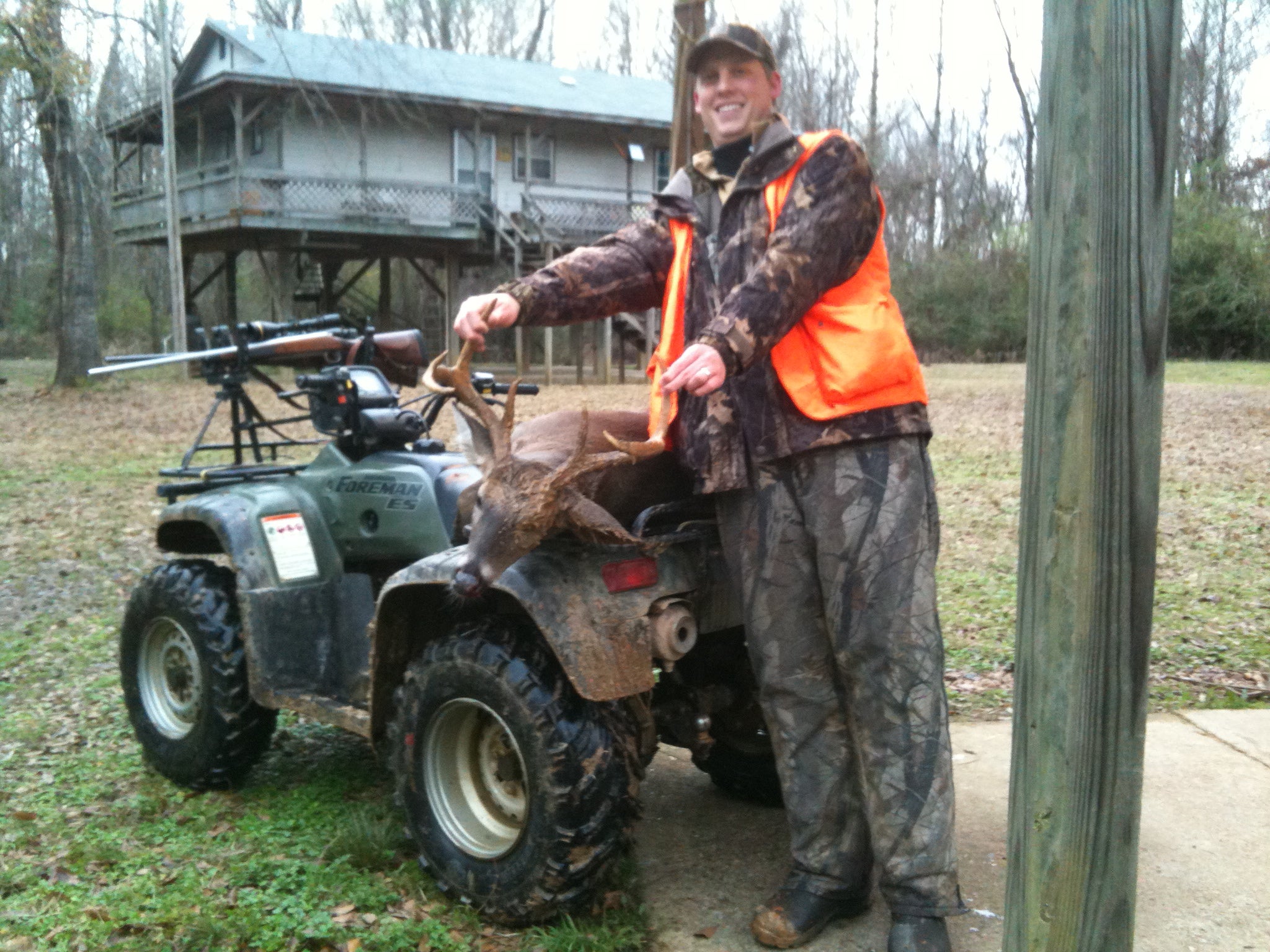ATV Safe Riding Tips
Dr. John Woods 09.21.14

The last time I looked, most of the ATV manufacturers have labels right on their ATVs giving a recommended age for its use. I feel certain, too, that the owner manuals probably have many safety suggestions listed as well. Of course, you have to read the manual to know that.
Most if not all ATV dealers will give you a riding overview of the unit you buy. It is essential to safe riding that the rider knows about the controls on the unit from ignition, kill switch, handlebar and foot pedal brake controls, throttle, lights, and load capabilities.
Nearly all ATVs are intended to be ridden by one person at a time, though it seems this rarely happens in practice. Full time helmet use is also recommended, as are gloves and boots well above the ankles. Flip-flops do not constitute safe riding shoes.
Parents should know better than to let their own kids violate these safe riding rules, but often they do not comply with them either. In my opinion an eight year old has no business riding an ATV without proper training and supervision. The makers of these machines encourage buyers to sign up for an ATV Safe Riding Course. I did, and it was not only fun, but informative as well.
There is a measure of common sense to be applied here. If I ride my ATV from deer camp a mile to my stand, I am not likely to wear a helmet, but you can bet I have on gloves and boots. I never ride without leather work gloves. Sometimes I wear goggles or wrap around glasses to defray debris from getting in my eyes while following another rider from behind. And at my age, my hot rod days are over.
In deer camps I also see sometimes dangerously over loaded ATVs, with racks carrying way too much weight. This can cause steering and braking issues as well. Care should be used when weighing down a front or rear rack with a deer. Tie it down securely and drive slowly on the return to camp. Be careful as well with towing or dragging things. ATVs are great utility vehicles, but they are not meant to pull out stumps or tow wagons loaded to the hilt.
Probably everyone reading this right now that owns an ATV is guilty of carrying more than one passenger on their unit at a time. But 5 extras? Once I witnessed a guy mudding his way out of a hunting field with two teens on the front rack, two on the rear, and an extra person on the seat behind him. I was impressed both axles did not break. Thank goodness with that load the ATV could not go fast, but he had little to no steering capability and not much visibility ahead. It was an accident waiting to happen.
Best precautions aside, ATV mishaps do occur. I speak from experience. I was creeping along on my ATV, going to the sand beach at our camp on the Big Black River. At one point you had to ride up a fairly steep hill and make an immediate turn on to the upper flat part of the trail. Going up went okay.
On the return trip as I was coming down the hill to make the lower turn back onto the trail, the front wheel turned into the loose sand and lost steering control. The downward momentum plus the weight of the unit caused it to tip over and flip into a complete roll over. Lucky me I just basically stepped off the unit as it rolled to run away clear from the 4-wheeler.
It landed upside down with a bent handlebar, scattered gear, and my hunting rifle barrel was sticking straight down into the sandbar. Frankly I was shocked at what just had happened, but it taught me a vital lesson. Anything can happen when riding an ATV.
Riding an ATV is serious business. Hunters are injured every season doing something on an ATV they knew better than to try. Just use some common sense, and get off the gas. Balance your loads, but not with riders. Keep an eye out for obstacles. ATVs are great tools, but they can hurt you if they’re not used safely.